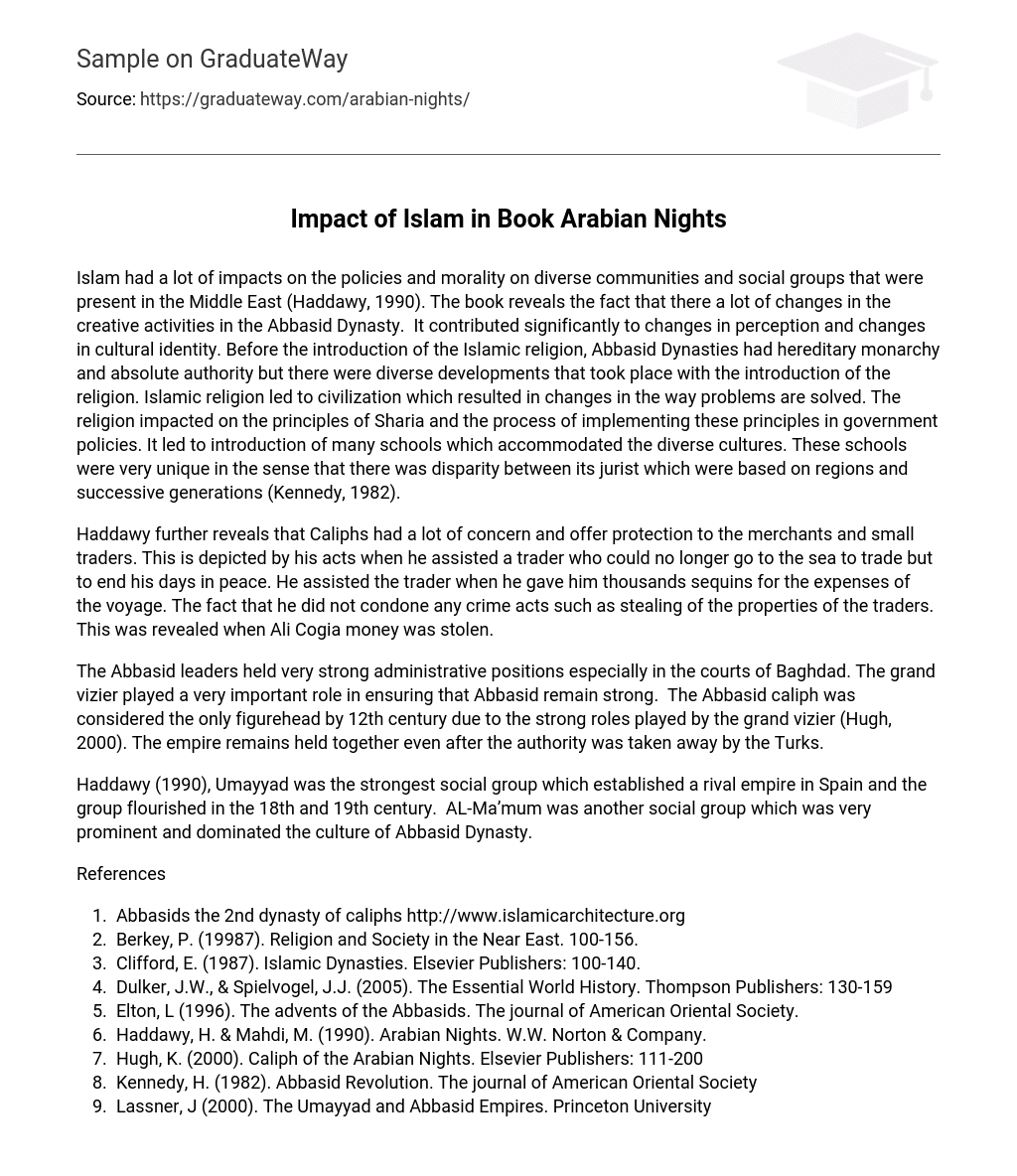Islam had a lot of impacts on the policies and morality on diverse communities and social groups that were present in the Middle East (Haddawy, 1990). The book reveals the fact that there a lot of changes in the creative activities in the Abbasid Dynasty. It contributed significantly to changes in perception and changes in cultural identity. Before the introduction of the Islamic religion, Abbasid Dynasties had hereditary monarchy and absolute authority but there were diverse developments that took place with the introduction of the religion. Islamic religion led to civilization which resulted in changes in the way problems are solved. The religion impacted on the principles of Sharia and the process of implementing these principles in government policies. It led to introduction of many schools which accommodated the diverse cultures. These schools were very unique in the sense that there was disparity between its jurist which were based on regions and successive generations (Kennedy, 1982).
Haddawy further reveals that Caliphs had a lot of concern and offer protection to the merchants and small traders. This is depicted by his acts when he assisted a trader who could no longer go to the sea to trade but to end his days in peace. He assisted the trader when he gave him thousands sequins for the expenses of the voyage. The fact that he did not condone any crime acts such as stealing of the properties of the traders. This was revealed when Ali Cogia money was stolen.
The Abbasid leaders held very strong administrative positions especially in the courts of Baghdad. The grand vizier played a very important role in ensuring that Abbasid remain strong. The Abbasid caliph was considered the only figurehead by 12th century due to the strong roles played by the grand vizier (Hugh, 2000). The empire remains held together even after the authority was taken away by the Turks.
Haddawy (1990), Umayyad was the strongest social group which established a rival empire in Spain and the group flourished in the 18th and 19th century. AL-Ma’mum was another social group which was very prominent and dominated the culture of Abbasid Dynasty.
References
- Abbasids the 2nd dynasty of caliphs http://www.islamicarchitecture.org
- Berkey, P. (19987). Religion and Society in the Near East. 100-156.
- Clifford, E. (1987). Islamic Dynasties. Elsevier Publishers: 100-140.
- Dulker, J.W., & Spielvogel, J.J. (2005). The Essential World History. Thompson Publishers: 130-159
- Elton, L (1996). The advents of the Abbasids. The journal of American Oriental Society.
- Haddawy, H. & Mahdi, M. (1990). Arabian Nights. W.W. Norton & Company.
- Hugh, K. (2000). Caliph of the Arabian Nights. Elsevier Publishers: 111-200
- Kennedy, H. (1982). Abbasid Revolution. The journal of American Oriental Society
- Lassner, J (2000). The Umayyad and Abbasid Empires. Princeton University Press, 130-150
- Lewis, B. (1984). Cambridge History Islam. Cambridge University Press, 200-240
- Mahmood, I. (1997). Religious Inquisition as Social Policy in the Early Abbasid. 23-40
- Omar, F. (1969). Abbasid Caliphate. Cambridge University Press
- Philip, K. (1998). History of Arabs. Sage Publishers: 120-157
- Shaban, M. (1971). The Abbasid Revolution. Cambridge University Press, 200-250.
- Sharon, A. (1987). Abbasid Rule. Princeton University Press, 100-139





